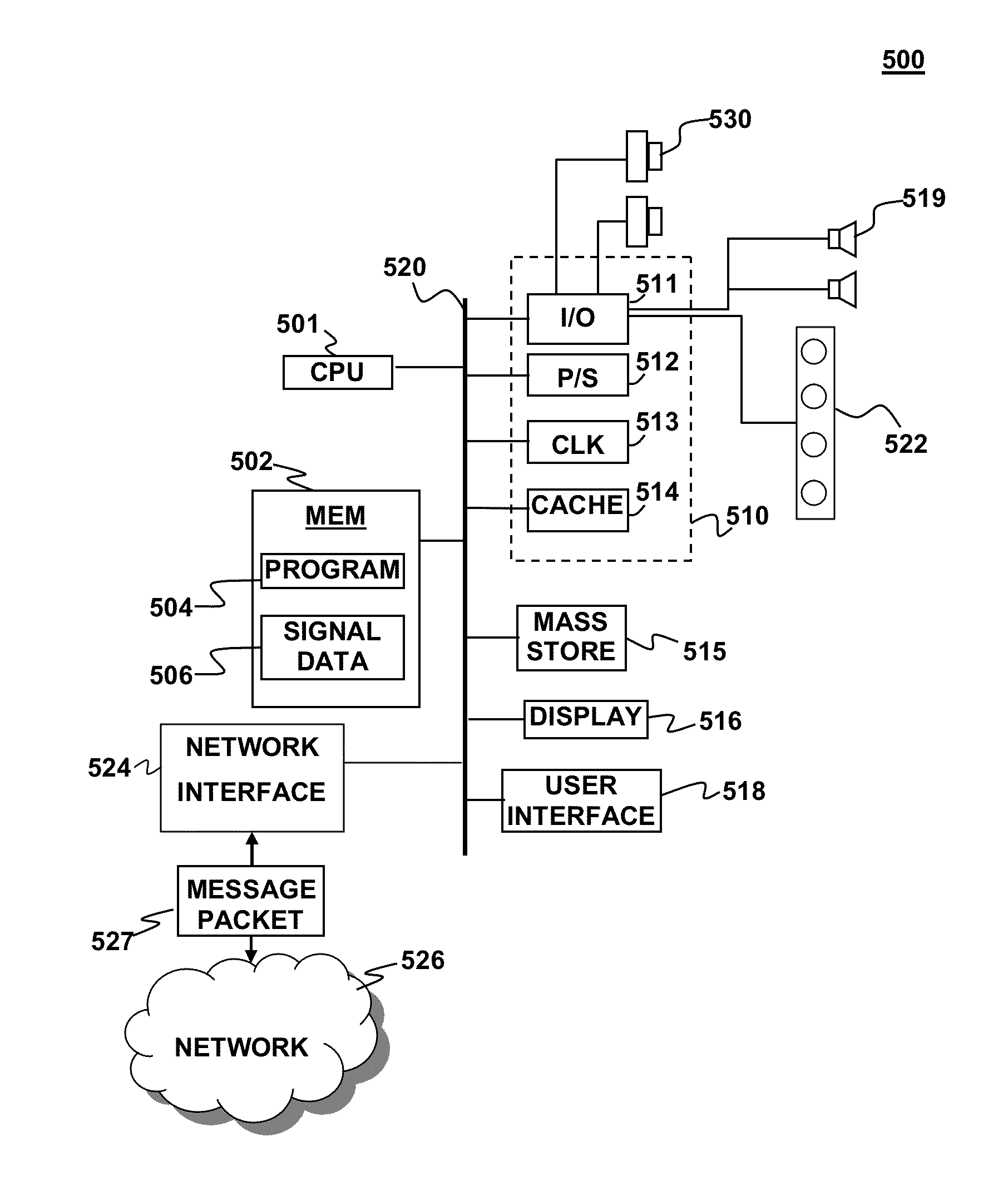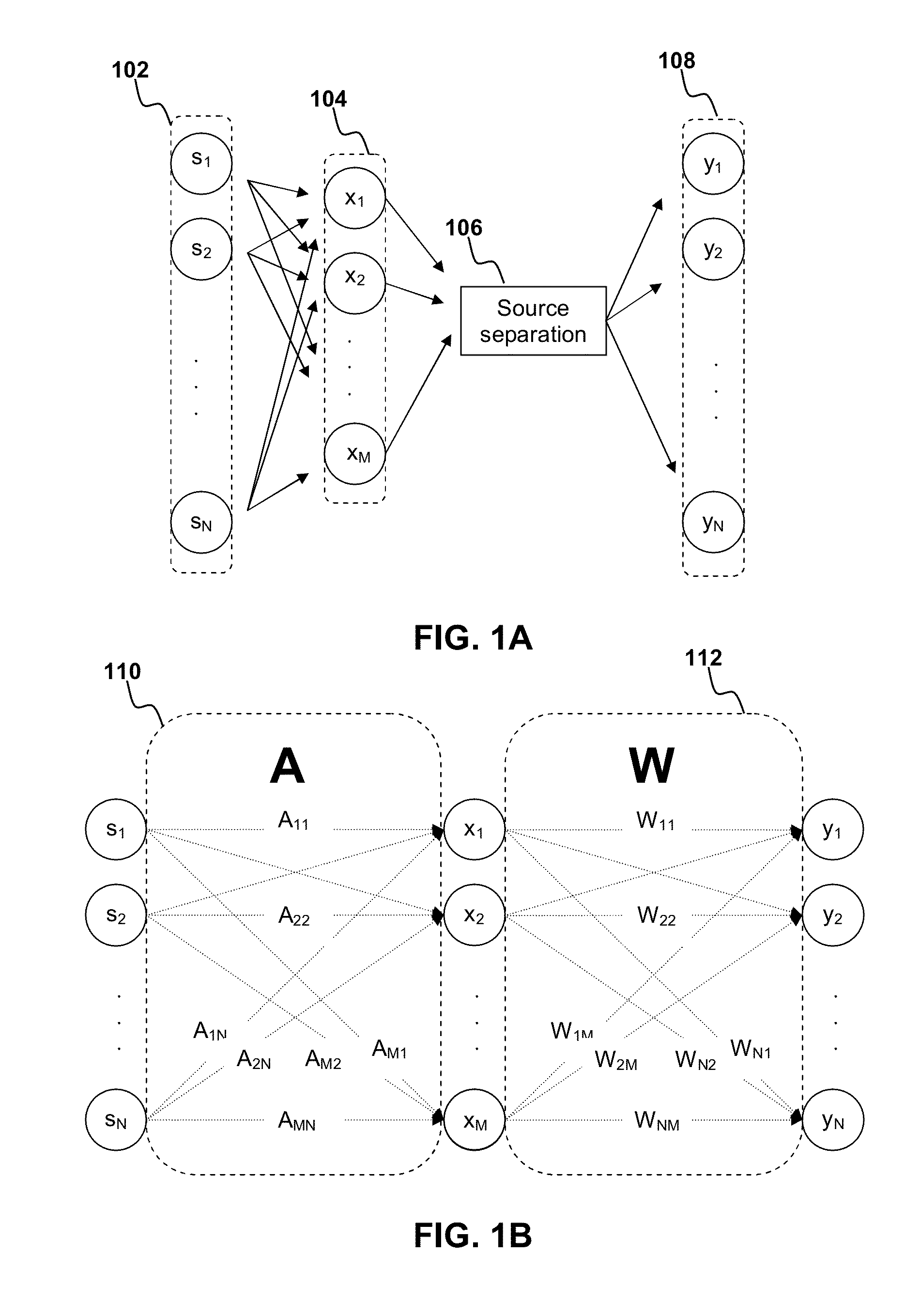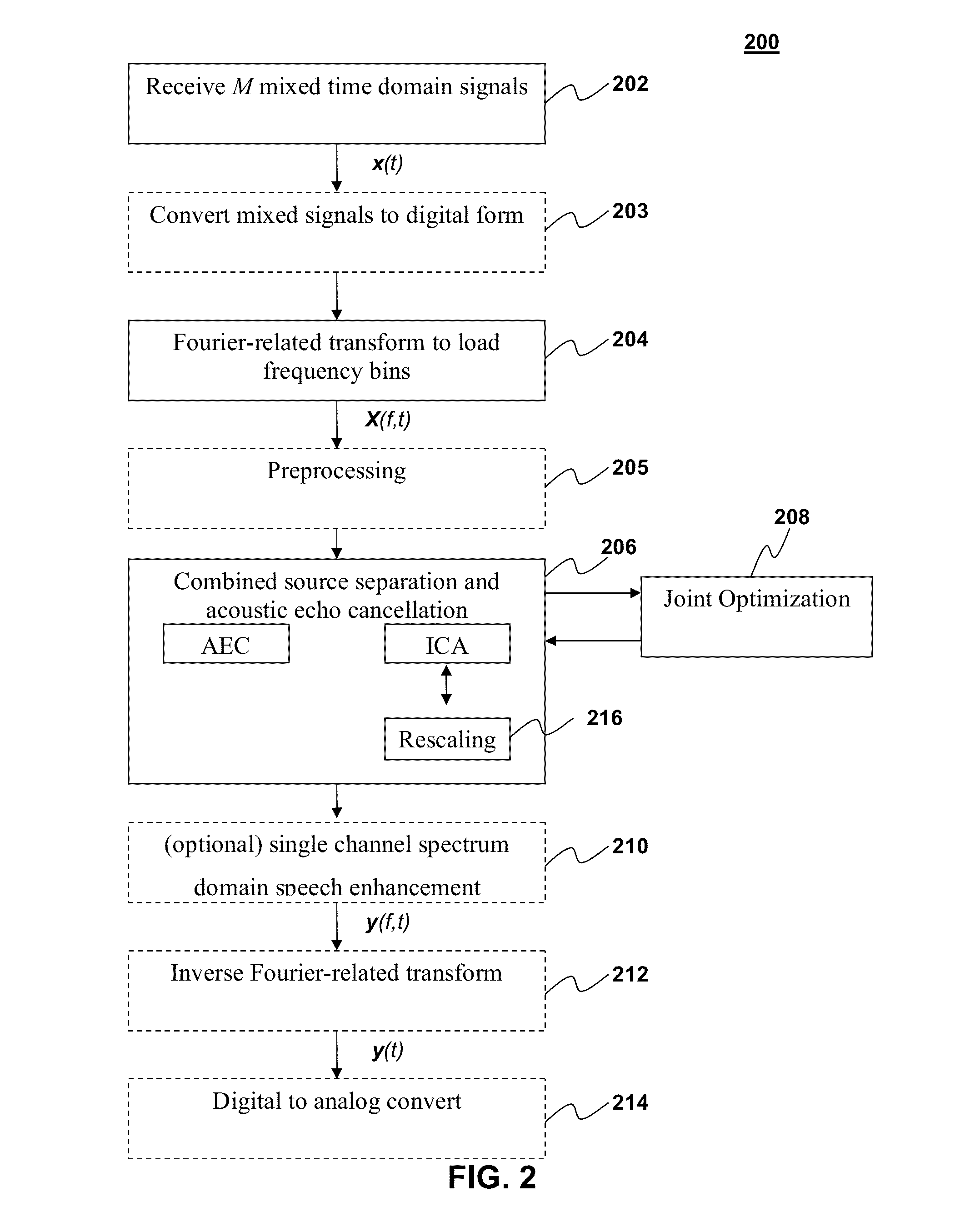Source separation by independent component analysis in conjuction with optimization of acoustic echo cancellation
a source separation and independent component technology, applied in the field of signal processing, can solve the problems of complex mixing process, high computational intensity of convolutive mixtures of time domain signals, and inability to separate mixed signals, so as to achieve a wide time frame and improve performance.
- Summary
- Abstract
- Description
- Claims
- Application Information
AI Technical Summary
Benefits of technology
Problems solved by technology
Method used
Image
Examples
Embodiment Construction
[0027]Embodiments of the present invention combine source separation by independent component analysis with acoustic echo cancellation to solve the source separation and multichannel acoustic echo cancellation problem jointly. Accordingly, embodiments of the present invention can be used to extract source signals from a set of mixed observation signals, wherein the source signals are mixed in an acoustic environment that produces interfering echoes in the mixed observation signals. This joint ICA and AEC solution can produce clean separated audio signals free from echoes.
[0028]In embodiments of the present invention, the solutions to the acoustic echo cancellation and source separation operations are jointly obtained by optimization. Joint optimization can produce solutions to independent component analysis de-mixing operations (i.e. ICA de-mixing matrix) and acoustic echo cancellation filter operations (i.e. AEC filters) in the same solution. When convergence of the joint optimizat...
PUM
 Login to View More
Login to View More Abstract
Description
Claims
Application Information
 Login to View More
Login to View More - R&D
- Intellectual Property
- Life Sciences
- Materials
- Tech Scout
- Unparalleled Data Quality
- Higher Quality Content
- 60% Fewer Hallucinations
Browse by: Latest US Patents, China's latest patents, Technical Efficacy Thesaurus, Application Domain, Technology Topic, Popular Technical Reports.
© 2025 PatSnap. All rights reserved.Legal|Privacy policy|Modern Slavery Act Transparency Statement|Sitemap|About US| Contact US: help@patsnap.com



